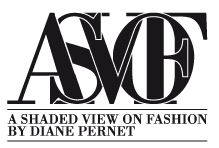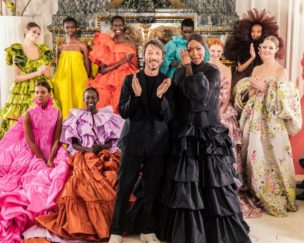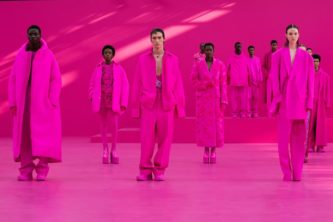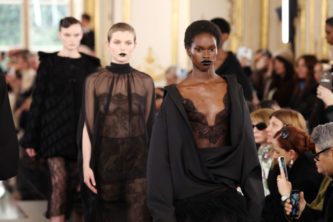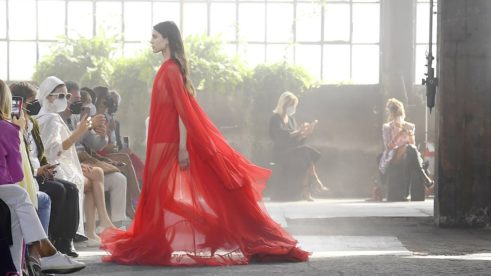Dear Shaded Viewers,
The history of a fashion house when the founder and namesake die or departs is so checkered with fables, legends, and stories, it’s a book on its own.
Christian Dior to Yves Saint Laurent, Yves Saint Laurent to Alber Elbaz then Tom Ford, Chanel to Philippe Guibourge, then Karl Lagerfeld, and so on, but there is also a substantial difference between houses where the name above the door is still alive, and those where the designer is no longer with us. Madame Gres, Jean Patou, Poiret, etc are houses revived at various times at others totally dormant. The most difficult replacements in recent years such as at Givenchy, also show that a famous, good or even great designer may not be the right answer.
Pier Paolo had years at Valentino first as part of the accessories team, and then in partnership with Maria Grazia Chiuri designing the collections, and perhaps this gave him a deeper understanding of his task when he eventually took over solo. His deep insider experience, his knowledge of the workings of the house and the teams involved, as well as his awareness of the Valentino creative heritage and signatures was embedded. It may also be timing, as so often in life, that he was waiting ready in the wings for the opportunity to step into the limelight.
After a decade at Fendi he and Chiuri joined Valentino in 1999, and then stepped into the design roles in 2008 and in 2016 he became the sole designer. So, he’s been at Valentino the best part of twenty-five years in one role or another.
What remains so wonderful is his understanding of moving the house forward, alongside retaining the elements which made it Valentino in the first place. His fresh spins on Valentino white, Valentino ruffles, Valentino red, and so on whilst bringing his own modernity and operatic glamour to the house. The balancing act of respecting the house, yet not allowing it to stagnate or rest on its creative laurels is something he handled to perfection.
Pier Paolo Piccioli was able to balance several creative strands within the house across the seasons, from Rockstuds to simple linear looks, and through to simply enormous ballgowns. He worked with Guido Palau and Pat McGrath to create new glamour in hair and makeup, often referencing the past but giving a sharp modernity is the reinterpretations. The huge hair, or feather eyelashes may have acknowledged a nodding acquaintance with the sixties and seventies, but like the ballgowns never looked retro. Colour often thrust the huge gowns into a modern statement, and colour layering in simple languid, almost Halston style separates was a wonderful Piccioli look to balance the excesses of gala looks. The fluid pieces could be shown on men or women and again, although menswear had for some time been a line at Valentino, the looks were explodedinto a much broader range.
Perhaps this was one of the great strengths during these seasons, the options, and stories within stories which the designer always managed to make a coherent statement in fashion terms, but which offered choices from the more classic Valentino through to edgier and more challenging looks and even close reinterpretations of some of the classics. Pier Paolo Piccioli did the job by being both safe and dangerous, but always with his eye on the Valentino narrative. Established from the very beginning by Mr Valentino and Mr Giametti as a luxury Italian house, from shoes to Philip Treacy millinery, the new designer at the helm never lost sight of that foundation as he built new clients and new fans.
The seasons saw new locations for shows, new audiences, new Red-Carpet wearers and with the diffusion lines, huge crowds of new and younger fans. Turning a “heritage” house into “hot” house without throwing away anything, but simply by editing and adding to create a new vision of Valentino.
Mr Valentino and Mr Giametti looked on and supported, and this in itself says something about the years of Pier Paolo’s tenure at the house. Season after season he balanced the collections, time after time he demonstrated his ability to whisk a design element from the past and magically make it fresh, without pastiche or ruining it. It’s a really difficult creative trick, and one which I touched on in the beginning. If it was easy, why are there so many short-lived failures?
So, in recent months we’ve seen so many changes, comings, and goings, and as it should, fashion changes, but this departure will leave a space difficult to fill. It also begs the huge question – is Pier Paolo Piccioli going somewhere else?
I’m sure whatever he does his Valentino years will be remembered as one hundred percent successful, by the house, by the clients, by the press and possibly most of all by his much-adored workrooms who he celebrates and pushes onto the runway whenever possible. So, perhaps finally, it’s about his ability to design and create clothes in the classic manner, a true designer, not a stylist. Working in that traditional process which takes fashion from the first piece of fabric in the workroom through to model showing it on the catwalk, and to the applause and then finally the customers. The link to the skills of the founder of the house Mr Valentino, who trained at Jean Desses couture house in the 1950’s is apparent. It’s perhaps what’s lacking in many designers posted into great houses unable to hack it; in the final analysis Mr Pier Paolo Piccioli you’re excellent at the job.
Later,
Tony Glenville
